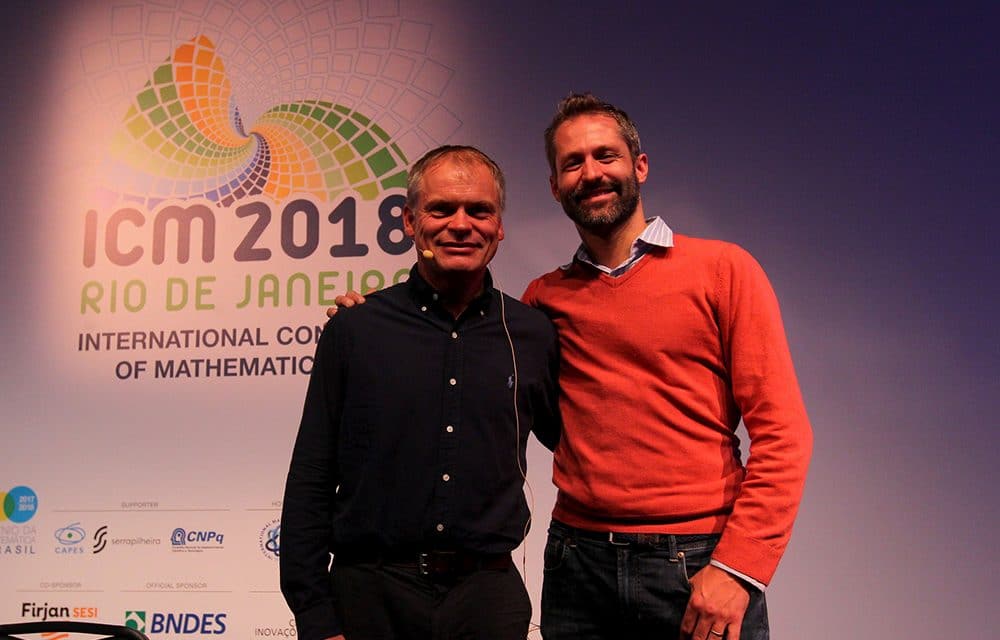August 6, 2018, 7:22 pm

Duo Robert Morris and József Balogh, dubbed an act of outstanding mathematicians by the talk’s attendees, set out to outline the method of hypergraph containers on August 6 at the 2018 International Congress of Mathematicians.
Morris thanked the pair’s collaborators as he began the presentation, paying particular tribute to the University of Tel Aviv mathematician Wojciech Samotij, who has been an important research collaborator.
Read more:
“We’re building on an enormous body of work that’s been forming for several decades. Things like triangle-free graphs, or perhaps what triangle-free graphs of certain densities look like,” said Morris, who credits his and Balogh’s achievements with multiple collaborations in addition to drawing heavily on previous research. “We see that sometimes order appears out of disorder.”
Although Balogh obtained his Ph.D. in 2001, he has also garnered fans amongst his colleagues, owing to a prolific nature that has led him to author more than 150 papers.
Morris, despite already being a highly acclaimed mathematician in the combinatorics field, recently added yet another award to his accolade as a 2018 recipient of the Delkerson Ray Fulkerson Prize. He has previously received the 2017 Prize of the Mathematical Congress of the Americas and the Brazilian Mathematical Society in the same year, as well as the 2016 SIAM George Pólya Prize in Combinatorics, the 2015 European Prize in Combinatorics and more.
With Balogh, the pair broke down a recently-developed technique for bounding the number and controlling the typical structure of finite objects with forbidden structures. Among the elements they walked the audience through in relation to their research, Balogh and Morris presented elements involving sum-free sets and subsets, as well as arithmetic progression free-sets and (3,4)-problem in discrete geometry.
While collaborating long-distance still has its challenges, Morris said that the three have found ways to make it work for all of them. “A lot of the really creative part is done when we’re together, so we visit each other. Wojciech [Samotji] comes to Brazil a couple of times every year, József can’t come as often as he has a family,” he said. “When we’re apart, it’s mostly the writing part – you know, you’ve talked about it, you’ve done the creative part, then you sit down and try work out the details.”
Balogh and Morris’s work is already being used in more than 30 different applications, including counting discrete structures, probabilistic combinatorics and proving the existence of some structures with given type properties. They also presented a range of potential future applications for their work, including strengthening container theorems for particular applications and boosting supersaturation. “We need more creative ideas that appear on the horizon!” said Balogh.